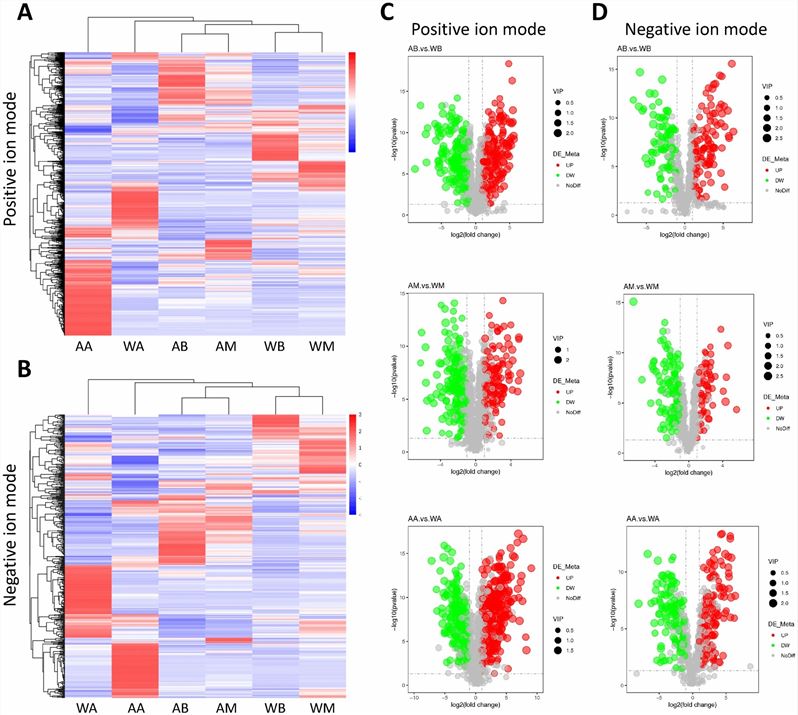Based on cutting-edge metabolomics technology platforms, Lifeasible provides mushroom differential metabolomics services to analyze the patterns of mushroom metabolites and potential maturation indicators in different environments and developmental stages.
Introduction to Mushroom Differential Metabolomics
Mushrooms are an integral and essential part of the ecosystem and are highly valuable fungi. Due to their multiple metabolic components and nutritional values, they play a crucial role in various diseases. However, there is no holistic insight to elucidate the molecular basis of the differentiated usage and accurate annotation of physiological maturity to fluctuating yields and quality. Therefore, there is an urgent need to establish indicators of metabolite changes and maturity of mushroom substrates for production and research. Metabolomics can detect the overall trajectory of metabolites in mushrooms under specific conditions to reflect the pathophysiological process of mushrooms. Also, some differential metabolites can be detected as potential markers to characterize the pathophysiological status of mushrooms.
 Fig. 1. Metabolite profiling of different growth periods of fruiting bodies of cultivated and wild Inonotus hispidus is compared at budding, mature, and aging stages. (Li Z et al., 2022)
Fig. 1. Metabolite profiling of different growth periods of fruiting bodies of cultivated and wild Inonotus hispidus is compared at budding, mature, and aging stages. (Li Z et al., 2022)
Services
We can analyze the bioactive metabolites of various mushrooms. Lifeasible provides mushroom metabolomics services in different developmental stages and growth conditions. Notably, we measure quantitatively the dynamic multi-parameter metabolic response of mushrooms to genetic alterations or pathophysiological stimuli. We also provide extensive targeted metabolomic analysis of changes in key non-volatile taste components of mushrooms under different drying methods.
- Mushroom metabolomics at different developmental stages
The main metabolites of mushrooms at different stages are related to their morphology. We provide non-targeted metabolomics techniques to analyze metabolites from mushroom mycelium, young and mature cotyledons, and screen marker metabolites to support subsequent integrated analysis of mushroom target metabolites.
- Mushroom metabolomics for different growth conditions
We provide GC-MS and LC-MS analysis of mushroom metabolomics under hormone, light, and cold effects.
- Other mushroom differential metabolomics
We use HPLC-MS techniques to analyze differences in the metabolomics of many different entomopathogenic bacteria and mushroom mycelium, as well as to detect metabolites of undegraded and degraded strains of mushrooms.
Workflow of Mushroom Metabolomics in Different Developmental Stages
- Principal component analysis of mushroom substrates at different developmental stages.
- Comparative analysis of different metabolites of mushrooms at different developmental stages.
- Annotation of total polysaccharides, total amino acids, crude protein, crude fat, total sterols, total polyphenols, total flavonoids, and total terpenoids of mushroom substrates at different stages of development.
- The annotated differential metabolites were submitted to the KEGG website for metabolic pathway enrichment analysis.
From the perspective of primary and secondary metabolites, we could comparatively analyze the changes of major metabolites in mushrooms in different growth stages and conditions. To draw more comprehensive conclusions, we usually combine metabolomics with other histological techniques, such as proteomics and transcriptomics. Differential metabolomics of mushrooms can help optimize the production process and improve its quality and yield. If you are interested in our services, please contact us.
Reference
- Li Z, et al. (2022) The regular pattern of metabolite changes in mushroom Inonotus hispidus in different growth periods and exploration of their indicator compounds[J]. Scientific Reports. 12(1): 14354.
For research or industrial raw materials, not for personal medical use!


 Fig. 1. Metabolite profiling of different growth periods of fruiting bodies of cultivated and wild Inonotus hispidus is compared at budding, mature, and aging stages. (Li Z et al., 2022)
Fig. 1. Metabolite profiling of different growth periods of fruiting bodies of cultivated and wild Inonotus hispidus is compared at budding, mature, and aging stages. (Li Z et al., 2022) 